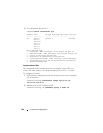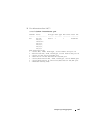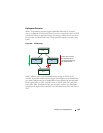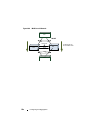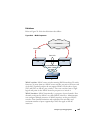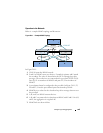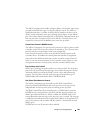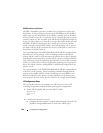
936 Configuring Link Aggregation
MLAG member ports: Ports on the peer MLAG switches that are part of the
MLAG interface (P1 on SW1 and S1 on SW2).
Non-redundant ports: Ports on either of the peer switches that are not part of
the MLAG (ports P4 and S4). MLAG interfaces and non-redundant ports
cannot be members of the same VLAN, i.e. a VLAN may contain MLAG
interfaces or a VLAN may contain non-redundant ports, but not both.
MLAG peer-link: A link between the two MLAG peer switches (ports
P2,P3,S2,S3). Only one peer-link can be configured per device. The peer-link
is crucial for the operation of the MLAG component. A port-channel must be
configured as the peer-link. All VLANs configured on MLAG interfaces must
be configured on the peer-link as well.
MLAG Dual Control Plane Detection link: A virtual link that is used to
advertise the Dual Control Plane Detection Protocol (DCPDP) packets
between the two MLAG switches (ports P4, S4). DCPDP is optional but
should be used with caution. The protocol is used as a secondary means of
detecting the presence of the peer switch in the network. The DCPDP
protocol must not be configured on MLAG interfaces.
Configuration Consistency
The administrator must ensure that the neighboring devices connected to
MLAG switches perceive the two switches as a single spanning tree and Link
Aggregation Control Protocol (LACP) entity. To achieve this end, the
following configuration settings must be identical for MLAG links on the
MLAG peer switches:
1
Link aggregation
– Hashing mode
– Minimum links
– Static/dynamic LAG
– LACP parameters
• Actor parameters
•Admin key
• Collector max-delay
• Partner parameters





